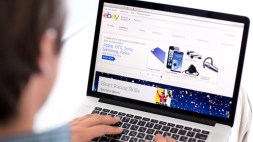Getting Started with Power BI: A Beginner’s Guide
Data visualization has become an essential part of business operations in today’s world. It helps companies to make informed decisions by understanding their data. One of the most popular tools for data visualization is Power BI, which is a business analytics service provided by Microsoft. In this beginner’s guide, we will explore what Power BI is and how to get started with it.
What is Power BI?
Power BI is a cloud-based business analytics tool that allows you to connect, analyze and visualize your data from various sources. It provides a user-friendly interface for creating interactive reports and dashboards. With Power BI, you can transform your raw data into actionable insights that help you make informed decisions.
Getting Started with Power BI
To get started with Power BI, you need to sign up for an account on the Microsoft website. Once you have signed up, you can download the desktop application or use the web-based version of the tool.
The first step in creating a report or dashboard in Power BI is to connect to your data source. You can connect to various data sources such as Excel spreadsheets, SQL Server databases or cloud-based services like Salesforce or Google Analytics.
After connecting to your data source, you can begin creating visualizations using the drag-and-drop interface provided by Power BI. You can choose from different types of visualizations such as charts, tables, maps and gauges.
Creating Reports and Dashboards
Once you have created your visualizations in Power BI, you can combine them into reports and dashboards. Reports are collections of visualizations that are designed to tell a story about your data while dashboards provide an overview of key metrics.
Power BI provides various customization options for reports and dashboards such as changing colors, fonts and layouts. You can also add filters and slicers that allow users to interact with your visualizations and drill down into specific data points.
Sharing Reports and Dashboards
Power BI allows you to share your reports and dashboards with other users within your organization or externally. You can share reports by publishing them to the Power BI service or embedding them in other applications.
You can also set up data alerts that notify you when specific changes occur in your data. This feature is useful for monitoring key metrics such as sales numbers or website traffic.
Conclusion:
In conclusion, Power BI is a powerful tool that enables businesses to turn their raw data into actionable insights. With its user-friendly interface, connecting to various data sources, creating visualizations, and sharing reports and dashboards have never been easier. By following this beginner’s guide, you’ll be well on your way to becoming a Power BI expert.
This text was generated using a large language model, and select text has been reviewed and moderated for purposes such as readability.





